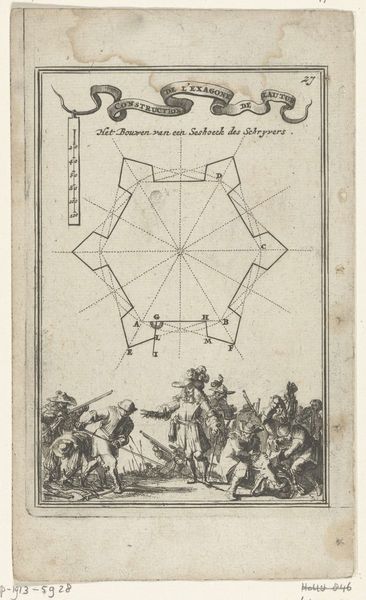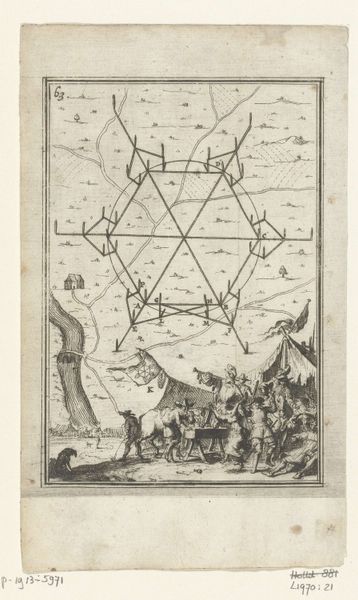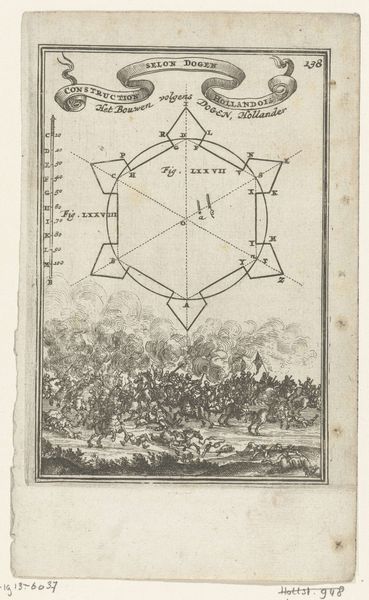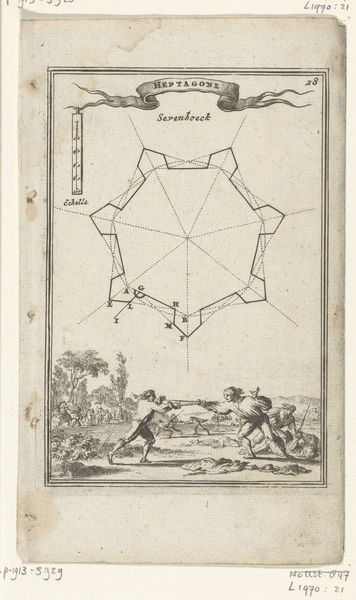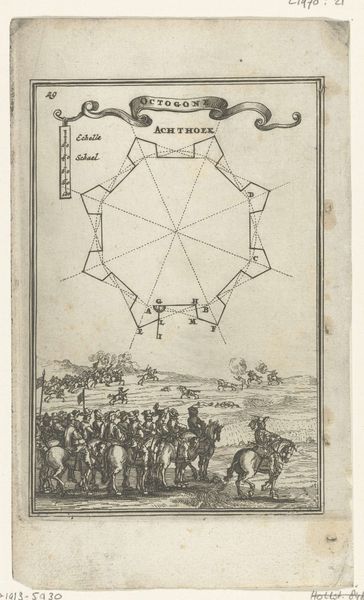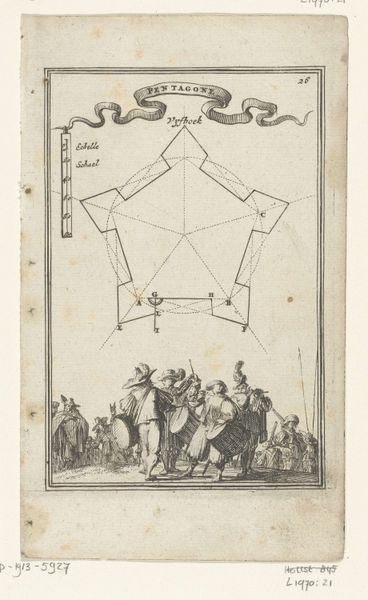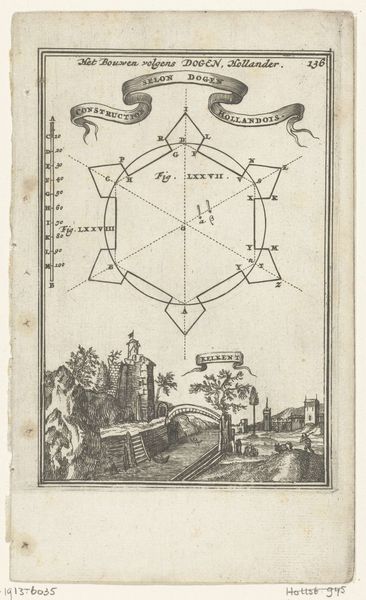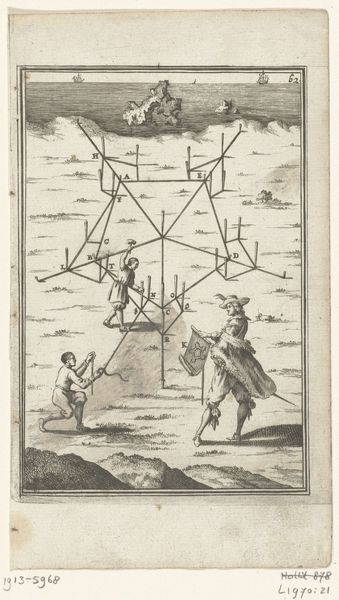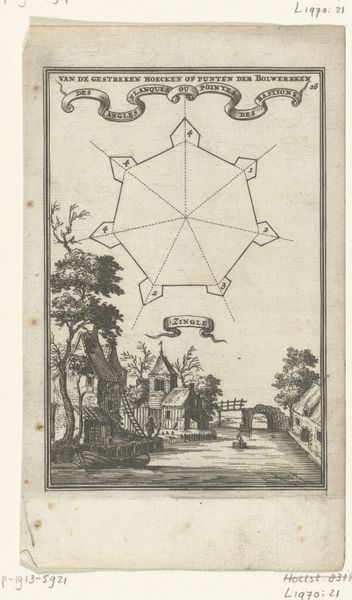
Illustratie voor 'Den Arbeid van Mars' van Allain Manesson Mallet 1672
0:00
0:00
romeyndehooghe
Rijksmuseum
drawing, print, paper, ink, pen, engraving
#
drawing
#
aged paper
#
light pencil work
#
quirky sketch
#
baroque
# print
#
old engraving style
#
sketch book
#
figuration
#
paper
#
personal sketchbook
#
ink
#
pen-ink sketch
#
line
#
pen work
#
sketchbook drawing
#
pen
#
history-painting
#
sketchbook art
#
engraving
Dimensions: height 186 mm, width 109 mm
Copyright: Rijks Museum: Open Domain
Curator: This intriguing print is titled "Illustratie voor 'Den Arbeid van Mars' van Allain Manesson Mallet," created around 1672 by Romeyn de Hooghe. It's currently held at the Rijksmuseum. It’s quite striking, isn't it? What's your immediate impression? Editor: A calculated disjunction. It has the cold precision of geometric abstraction hovering above what seems to be a group of men intensely focused around a table. A strange juxtaposition of abstract concept and human engagement, done with fine pen work. Curator: Indeed! De Hooghe worked primarily as an engraver and printmaker. The top portion demonstrates geometry for military engineering manuals. He emphasized accurate representation to fulfill the purpose of conveying technical information. Editor: And those men below, perhaps cartographers or military strategists themselves? There’s a concentration in their gestures, suggesting an intensity of calculation and perhaps, the weighing of destinies. The symbol of Mars presides over planning the details, in a sense. Curator: The ‘labor of Mars,’ referring to warfare. Given De Hooghe's frequent employment creating propaganda material, the bottom section might represent specific leaders or decisions connected to war. I see elements of theatricality in the arrangement that suggest how spectacle served those political objectives. Editor: The geometric figure feels like an attempt to impose order onto the chaos, perhaps a symbol of man's desire to control forces far greater than himself. The visual language echoes across the ages. But it’s not just visual; consider the socio-political meaning and the act of its crafting. Curator: Absolutely. One shouldn't dismiss the economics behind the process. This print wouldn’t have been widely accessible at the time. Consider also the relationship of its original production to contemporary re-productions as well! Editor: I agree. By deconstructing visual vocabularies we reconstruct a sense of that world’s longings, its strategies for survival— all inscribed in line and form. Curator: A worthwhile endeavor! These works truly capture the intersection between practical and historical applications. Editor: They invite us to consider those connections – tangible form meeting invisible meanings – every time we see it.
Comments
No comments
Be the first to comment and join the conversation on the ultimate creative platform.
